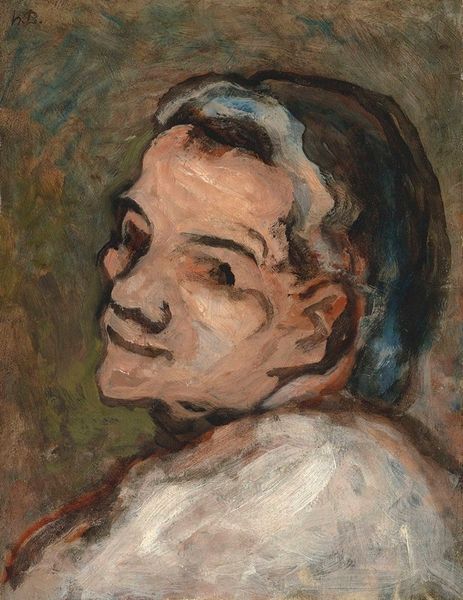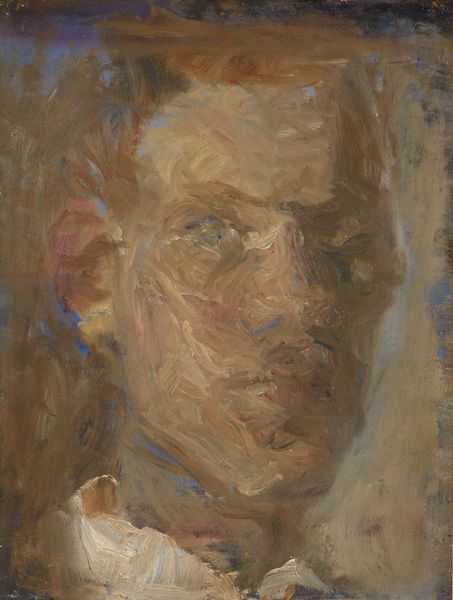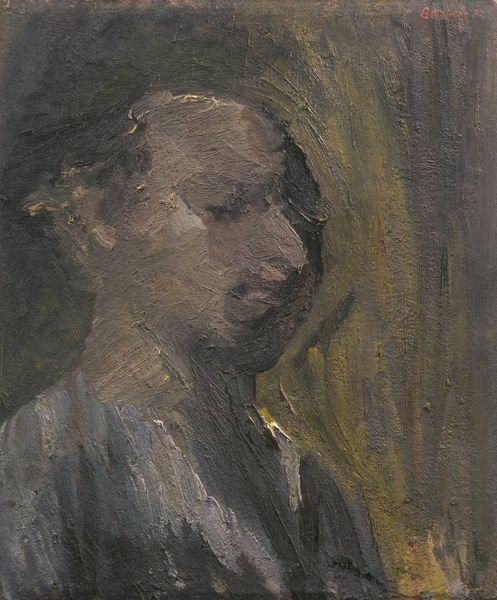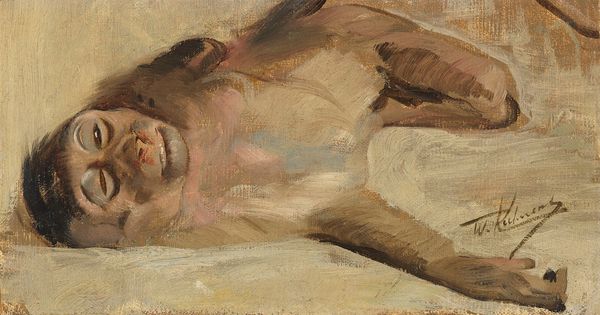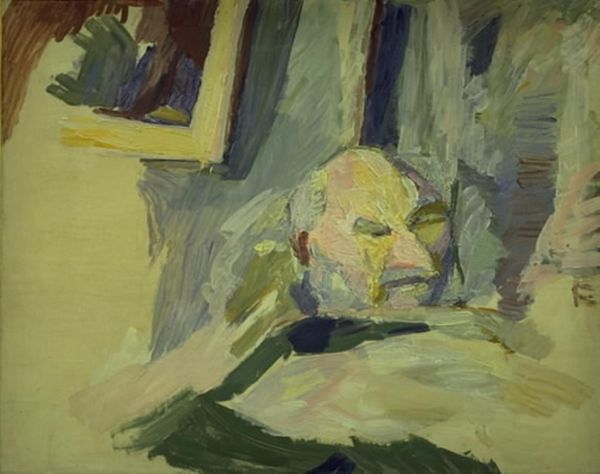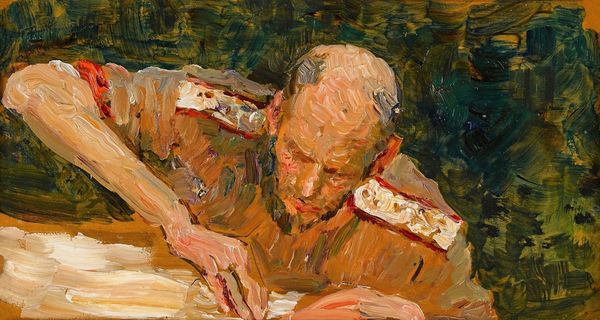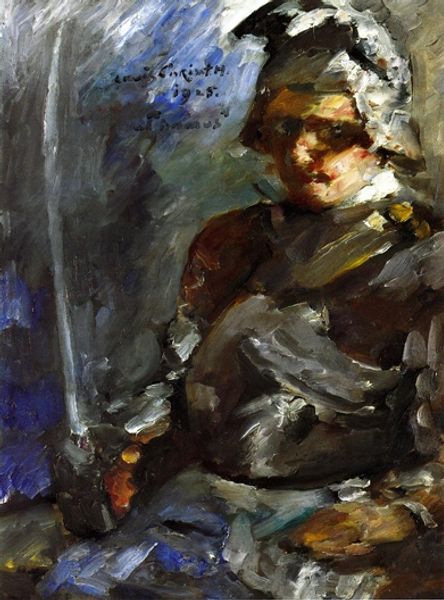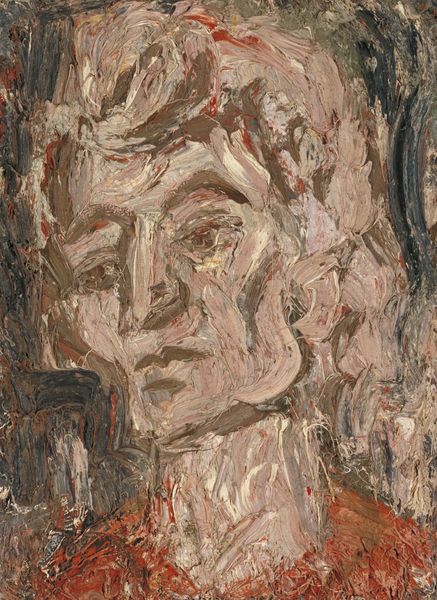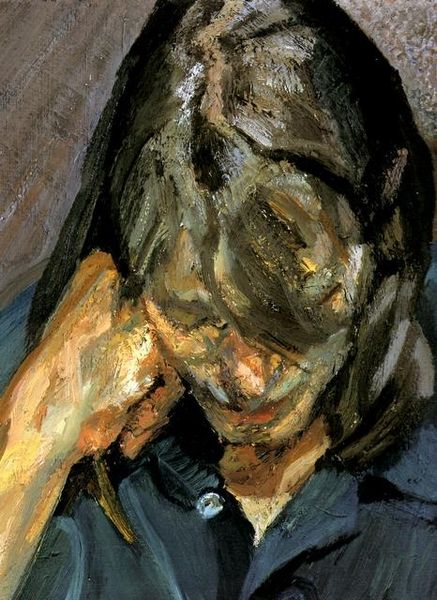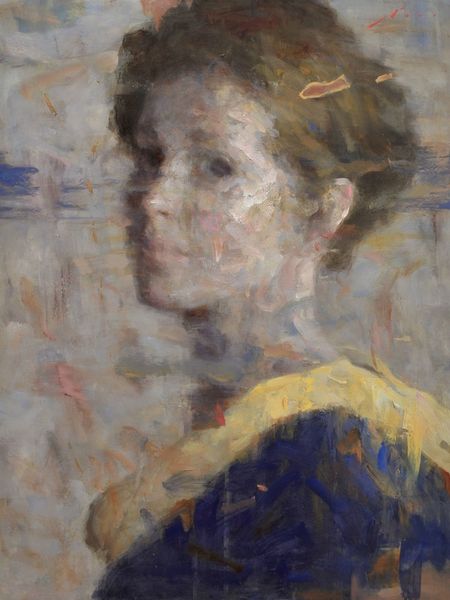
painting, oil-paint
#
portrait
#
painting
#
oil-paint
#
oil painting
#
modernism
Copyright: Public Domain: Artvee
Curator: This is Tadeusz Makowski's "Portret pana X," painted in 1932. Makowski, though Polish, spent much of his career in France. This oil painting offers a striking look into the modernist portraiture of the time. Editor: My first impression is a sense of introspection and exhaustion. The way his head is bowed and his eyes are cast downwards—it conveys a heavy, almost melancholic feeling. There’s a certain rawness to the brushstrokes that amplify this sense. Curator: Yes, the loose brushwork and warm color palette create an intimate and immediate feeling. It's worth considering the socio-political atmosphere of the 1930s—a period of economic depression and growing political instability. Do you think these elements might have been a deliberate intention, and might tell something more of this particular man? Editor: Absolutely. Considering the rise of anxieties in Europe, that downturn is impossible to ignore, not to mention antisemitism. This piece echoes wider struggles. Look at his posture – he almost shrinks within the frame. It feels vulnerable and burdened, beyond simply tired. Was Makowski exploring a more marginalized existence perhaps? Curator: The painting’s formal elements suggest he’s representing a middle class man. However, his position is very specific, particularly during the economic crises. Editor: To me it is suggestive of that class but, at least in that historical setting, the painting also reflects the anxieties about social and political identity which in some sectors generated open revolt and resistance. In many ways, and although the identity of “pana X” has always been hidden, it seems evident that this hidden figure may very well have had concerns regarding their political positions or beliefs. Curator: It brings to mind debates around the role of the artist and art, especially as tensions mounted in Europe. Artists had to chose if the were going to portray something else rather than social commentary. Editor: That’s a very pertinent point and perhaps it reflects both the subject of this art and Makowski's own uncertainties. And in this portrait, the identity and background of “Mr. X” invites ongoing discourse, challenging preconceived assumptions regarding Polish portraiture throughout modernism. Curator: In some respect the image has always presented and encouraged that form of challenging preconceptions as the painting continues to do even now. Editor: It offers valuable insight into individuals living through immense shifts and can be used to study art historical narratives as reflections and drivers of social change.
Comments
No comments
Be the first to comment and join the conversation on the ultimate creative platform.

